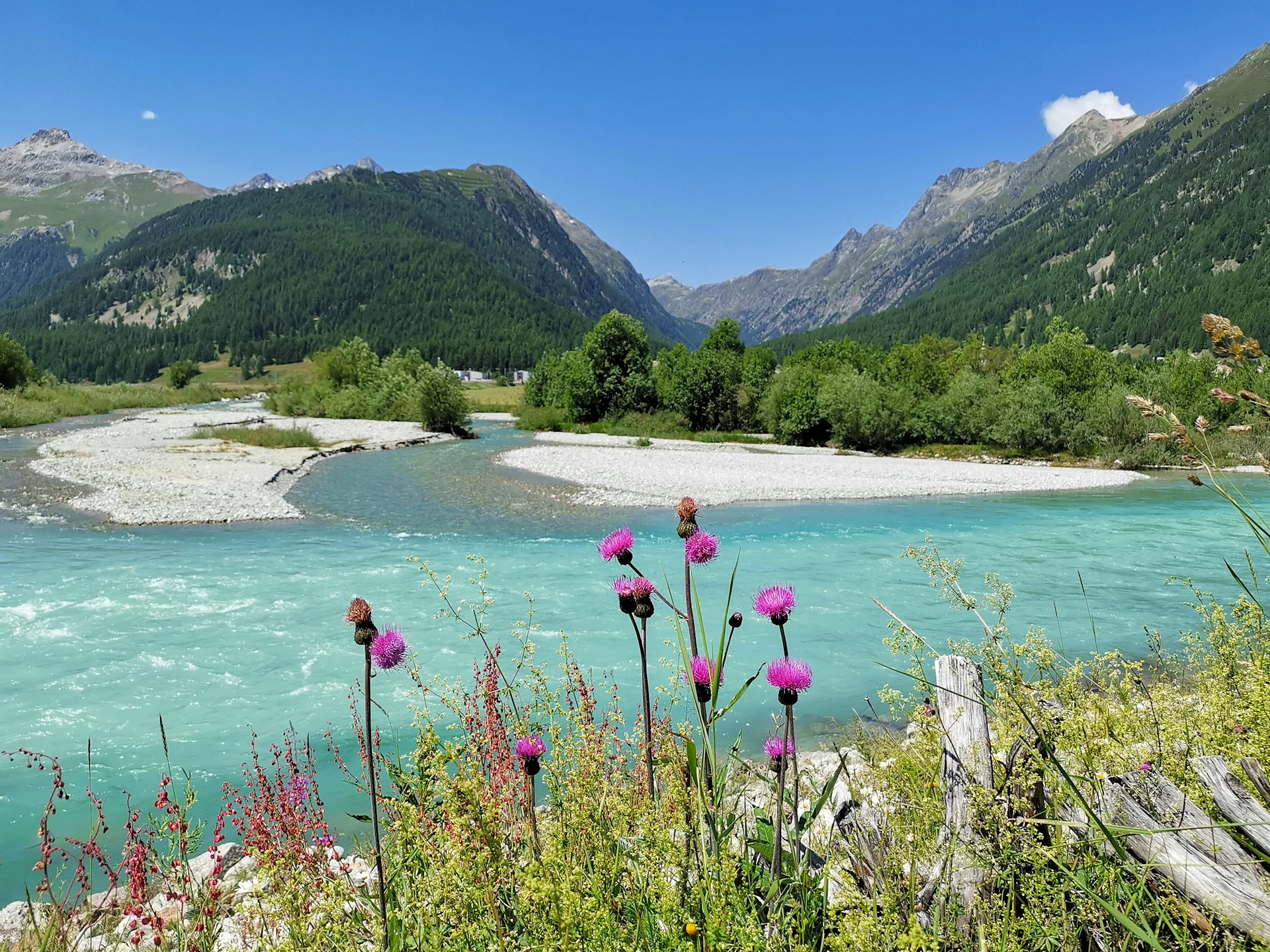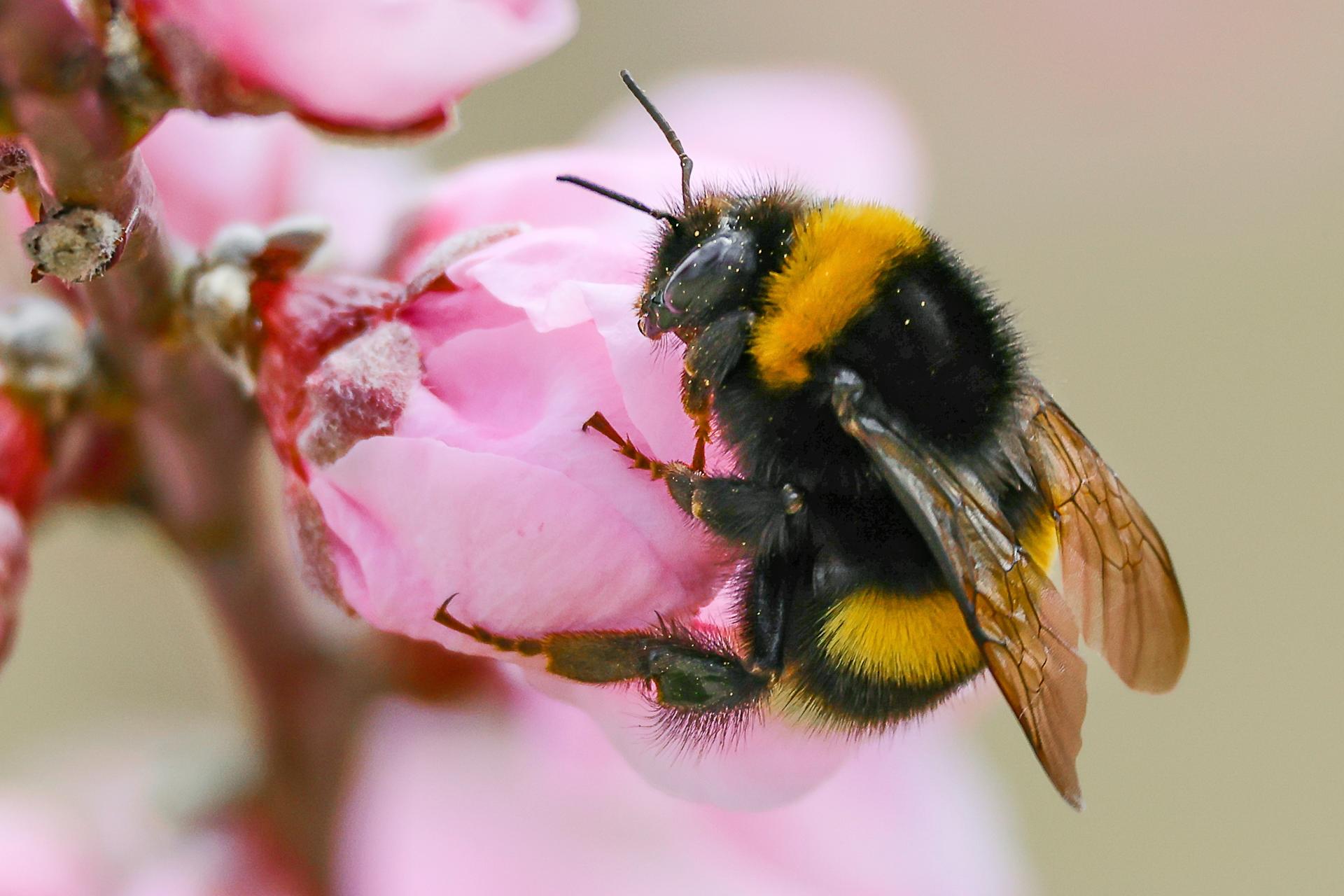
Biodiversity
Back to nature
The example of Bever shows the benefits of renaturation the floodplains. We also present four day trip destinations.
navigation

Biodiversity
Wild bees are the most important pollinators of flowers. Without them, many fruits simply wouldn't exist. Expert Antonia Zurbuchen reveals why they are endangered and what we can do to help.
Antonia Zurbuchen, according to the Red List, 60 bee species have become extinct in Switzerland over the last 30 years. How bad is the situation for our bees?
There's real cause for concern. More and more wild bees are lacking food and a habitat. This means about 45% of bee species are endangered, as the Red List also reported last year.
What are the reasons behind this development?
The bees are facing a shortage of food and habitats. Our landscape has changed considerably over recent decades. Meadows have disappeared and open land has been sealed. That's a big problem for ground-nesting species.
Why are wild bees so important?
They do most of the pollination, thereby supporting biodiversity - also in terms of the food we eat. If bees continue dying out at this rate, we'll have significantly fewer fruits and berries – whether it's apples, pears, cherries, strawberries, raspberries or blueberries.
But we still have honeybees.
While they are valuable pollinators too, they can't replace wild bees entirely. Many plants are only visited by specialised wild bees. The pollen of tomato flowers, for instance, can only be extracted by shaking. No honeybee is capable of doing that, but large wild bee species like bumblebees can. Many wild bees are simply more efficient pollinators.
Why's that?
Because some collect the pollen dry and don't stick it to their bodies with saliva, as honey bees do. This means more pollen comes off them the next time they visit a flower, ensuring more pollination.
Are honey bees less endangered?
We have a very high density of honey bees in Switzerland. So this species is not endangered here. But they are no longer found in the wild, only in the care of beekeepers. Adventive mites and bee diseases present real challenges as does the use of pesticides.
How do honey bees and their wild cousins get along?
They occasionally face off on flowers while foraging for food. But they tend to push rather than sting each other. Larger bees usually drive smaller ones away. Things get more aggressive near the hive.
Why's that?
Because bees invest a lot of effort in their offspring. Wild bees bite or sting as soon as a foreign bee or parasite comes near or into their nest.
Are wild bees 'wilder' than honey bees?
On the contrary, they are much more peaceful towards us humans because we don't steal their food supplies!
How many species of wild bees are found in Switzerland?
Just over 600. They look very different. There are large and small species, bald and furry ones, slender and chubby bees, red, black, yellow and iridescent types.
Can you recognise them all instantly?
No. Many species differ in minute ways which you would need binoculars to spot. However, the hornfaced bee, for example, can easily be recognised by its black and red colouring and mini-horns. It can be found almost everywhere in Switzerland.
You have conducted research on wild bees. What fascinates you about them so much?
Their individuality! I marked wild bees as part of my doctoral thesis. I noticed they don't all have the same sense of direction. Some individuals constantly struggled to find their nest again.
How many times a day does a bee fly out to collect pollen?
Ten to fifty times to provide a single offspring with enough pollen and nectar. In areas with lots of flowers, bees don't have to fly as far, making their work much easier. The number of pollen-foraging flights also depends on the hairy brushes on the hind legs or abdomen which bees use to transport their pollen. The larger the brushes, the more pollen sticks to them - and, in turn, the fewer flights they need.
You run courses on bee protection at the Migros Club School. What can people learn from you?
We teach people about the diversity of wild bees, their fascinating lifestyles and needs. We examine the habitats available in the areas near to the places where we run the courses and discuss how these habitats can be improved. We observe wild bees too if the weather is good.
What can we do to generally make life easier for bees?
Increase their food supply! We need to preserve the species-rich habitats that are still available: meadows, rough pastures, fallow land and herbaceous borders. Farmers must also reduce their use of pesticides and create new habitats. The same applies to residential areas.
And how can we help on a smaller scale?
By planting wildflowers, for example in pots on your balcony. If you have a garden, you can also create small structures for nesting. Simple pile up dead wood in sunlit areas and leave pithy plant stems rather than removing them. Areas of open ground are really important because more than half of all wild bees nest in the soil.
How useful are the man-made bee hotels that you can see everywhere?
Although they help raise awareness about bee protection, bee hotels actually only attract a few of the more common species. A good food supply in your garden or on your balcony is far better. What good is the best hotel without a restaurant nearby?
Promoting biodiversity: we can't do it on our own. Play your part now and protect Switzerland's biodiversity together with us!